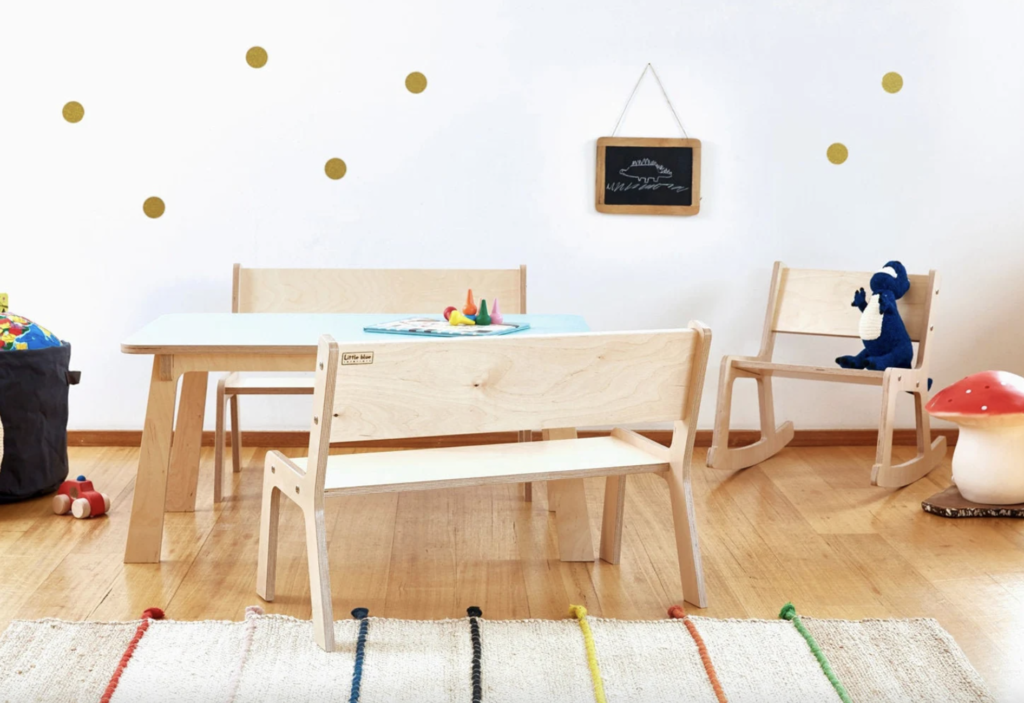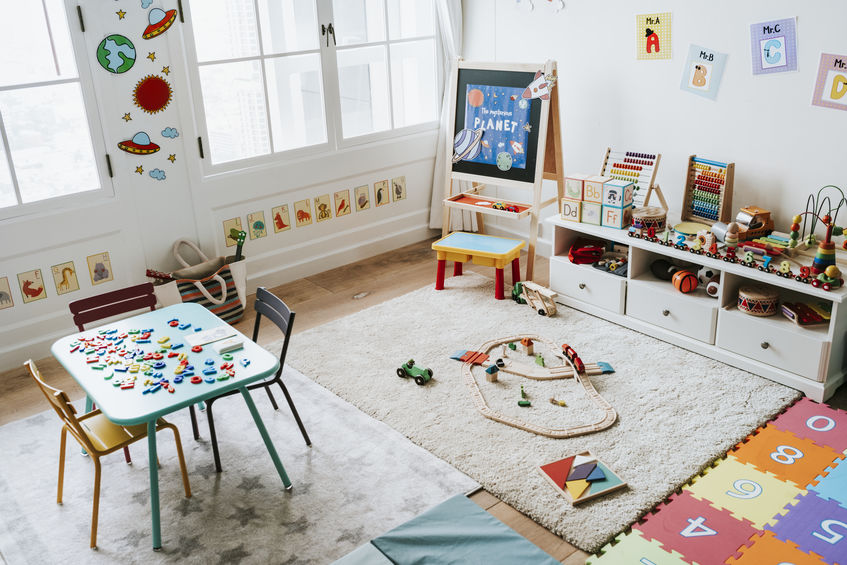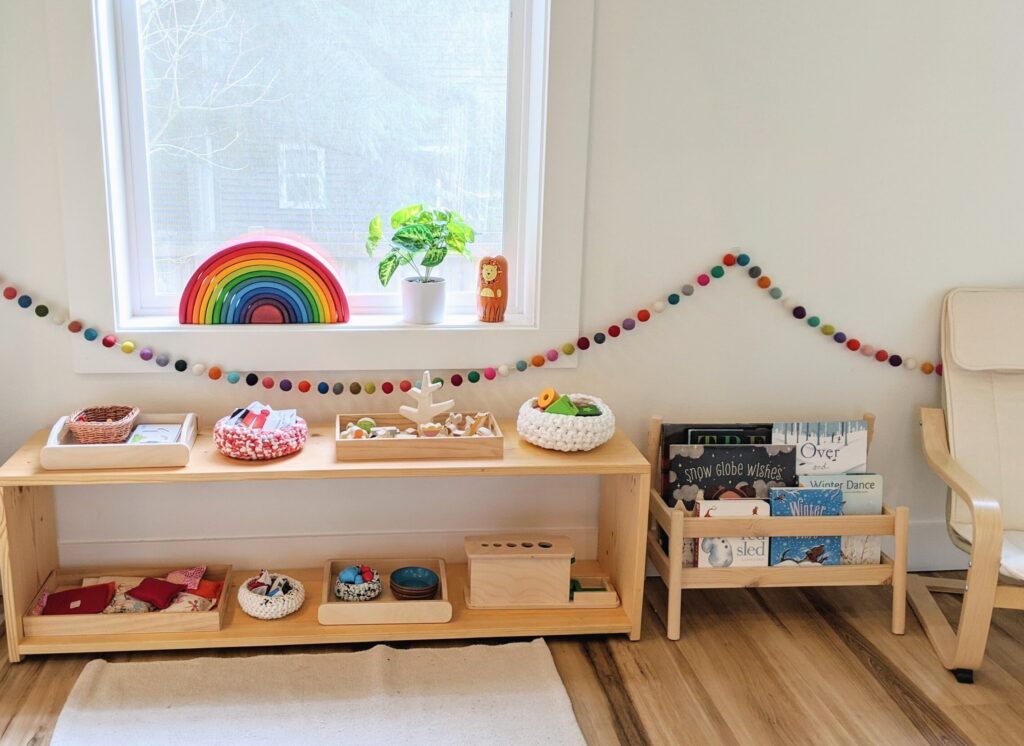Teaching your child independence from a young age is essential to their confidence and success in adult life. When introduced to the concept of Montessori, many parents believe that these teachings can only be incorporated in the classroom. You may be surprised to find that you can work them into your home life as well.
Montessori furniture pieces are home items inspired by the teachings of Dr. Maria Montessori. These items are kid-sized pieces of furniture that are designed to nurture self-reliance in your child. This includes products such as tables and chairs, bedroom shelves, and even kitchen items.
Montessori furniture isn’t just about how tall or short the product is. When you incorporate Montessori’s educational structure into your home life, you want to ensure that your child will benefit emotionally, cognitively, and socially as they learn to use the furniture. Continue reading to learn more about what Montessori furniture is and how to find and use it.

What is Montessori Furniture?
To understand Montessori furniture, you must first understand what exactly “Montessori” is. Montessori’s teachings revolve around meeting your child’s specific needs and supporting their ability to self-motivate and adapt to their environment at their own pace. Much of this program is manifested in educational settings.
For over a century, Montessori education has been practiced in schools throughout the world, inspired by the developments of Italian physician, Dr. Maria Montessori.
This concept is designed to meet the following aspects of your child’s life and health (Source: American Montessori Society):
- Cognitive functioning and capacity
- Emotional balance and self-regulation
- Social confidence and wellbeing
- Physical health
When you apply Montessori teachings, your child will begin to develop a deep, functional understanding of independence and what it takes to exercise accountability within that independence. This program encourages young students to interact boldly with one another, even with those that are outside their age groups.
Ultimately, the teachings aim to nurture a child’s autonomy and encourage them to become a leader when they mature. But how did this all begin, and what does this have to do with furniture?

The History of Montessori Education and Furniture
As mentioned above, the Montessori Method was created by Dr. Maria Montessori. The Italian physician and teacher was interested in scientific pedagogy and experimental psychology, which led her to an underprivileged, impoverished neighborhood in Rome, known as San Lorenzo. (“Scientific pedagogy” is the empirical collection of information related to education on all levels: school, home, institutional, and more. Source: Taylor & Francis Online)
Dr. Montessori began her work in San Lorenzo, Rome, in 1906, and opened her institution, Casa Dei Bambini (the English translation is “Children’s House”). The goal was to provide the area’s children with an education that was equal in quality to those living with greater privilege. This opportunity was extended even to those kids who believed that they could not learn.
With this vision, Montessori education – and furniture – was created. Kids that struggled with learning, social, and self-disciplinary challenges were taught to:
- Prepare their own meals (the advent of the Montessori kitchen environment)
- Clean their living and play space (the genesis of the Montessori home)
- Participate in hands-on educational programs and activities (the beginning of the Montessori classroom)
Soon after the children began the program, Dr. Montessori noticed significant behavioral changes within them. The kids were engaged in learning on levels that no one imagined they could achieve. They were able to control and manage their emotions to the point that they became calmer, maintained concentration for extended periods, and displayed genuine concern for one another and their surroundings. (Source: American Montessori Society)
Since then, this educational style has exploded in popularity throughout the world. Parents everywhere are encouraged to incorporate these practices into their daily lives for the same benefits that kids in 1906 reaped.
With all this in mind, it is easy to understand that Montessori furniture is furnishings, appliances, and other child-sized tools designed for kids’ use to encourage self-reliance and experimentation in your home according to the Montessori philosophies.

Best Montessori Tables and Chairs
Many families use Montessori tables and chairs for weaning purposes. “Montessori weaning” is the process of assisting your baby’s transition from liquid to solid foods. A table is essential for this, as it provides your baby with a designated place at which they consume their meals, just as their parents do. (Source: The Kavanaugh Report)
A Montessori table should encourage your child to master the following skills:
- Independence: Like all other aspects of the Montessori lifestyle, your child will learn to depend on themselves for this facet of home life. At their table, they will not have to wait for you to lift them into a highchair or feed them.
- Dining etiquette: Your child will learn what is and is not appropriate at the table concerning their behaviors and proper table settings.
- Space use: Their table does not have to be used for dining exclusively. Encourage your child to use their table for work and food preparation as well. This way, they’ll learn how to make this surface into a multipurpose space.

Best Montessori Shelves and Bookshelves
It is tough to remind yourself of the goal of Montessori furniture when choosing basic home items like shelves. The idea is not simply to fill the house and your child’s room with mini versions of your furniture. You will need to consider the psychological aspects of extending your child the opportunity to develop organizational skills and self-sufficiency both in “office” or learning settings and home maintenance.
Montessori shelving should be characterized by the following attributes (Source: The Kavanaugh Report):
- Age-conscious accessibility: Consider your child’s height and awareness levels when selecting a Montessori-friendly shelf for their bedroom or play area. Toddlers and young children may not do well with shelves that feature closed compartments (i.e., drawers and cabinets), so cube organizers (without cubbies) and other such open designs are a great alternative. Remember to keep their height in mind when choosing the shelf as well.
- Coloration: This will depend heavily on your child and their natural response to colors and brightness. Some believe that proper Montessori shelves should be light in color, so it stands out and encourages your child to interact with the piece of furniture. Others are just fine with incorporating brighter or darker pieces into their kids’ spaces. This all depends on what your child prefers and responds to.
- Stability: This factor is, of course, critical to your child’s safety. You must ensure that the shelf is sturdy enough to remain in place when used by possibly rambunctious children. It should never be at risk of falling over.
Remember that you’ll need to update your child’s shelving as they age. This applies not only to the shelf’s structure but the objects stored on the shelf as well. For instance, you can create specific activities based on the composition of your child’s shelf. The best options for this are those centered on organizational skills.
For example, kids less than one-year-old would greatly benefit from having brightly colored toys stored on their open shelves. When it’s time to play with the toy sets or return them to their proper storage area, they can learn to identify specific locations in the shelf divisions and build organizational skills from a young age.
You can even consider theming the shelf for toddlers to encourage higher levels of engagement. If your child has a liking for certain kinds of objects or aspects of nature (e.g., specific seasons, animals, or locations), paint these elements onto the shelf and base their shelf experience on that. (If you like, you can use this as a teaching tool, helping them learn to identify specific animals or how to count with numbered cubbies, for example.)


